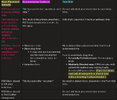- Joined
- Oct 26, 2008
- Messages
- 7,472
- Reaction score
- 4,155
When do you click it?

 www.news-medical.net
www.news-medical.net

 www.asahq.org
www.asahq.org

Inaccurately recording the start of anesthesia care results in lost billing time for medical centers
Inaccurately recording the start of anesthesia care during a procedure is common and results in significant lost billing time for anesthesia practices and medical centers, suggests a study being presented at the American Society of Anesthesiologists' ADVANCE 2023, the Anesthesiology Business Event.

Incorrectly recorded anesthesia start times cost medical centers and anesthesia practices significant revenue
Inaccurately recording the start of anesthesia care during a procedure is common and results in significant lost billing time for anesthesia practices and medical centers, suggests a study being presented at the American Society of Anesthesiologists’ ADVANCE 2023, the Anesthesiology Business Event.

